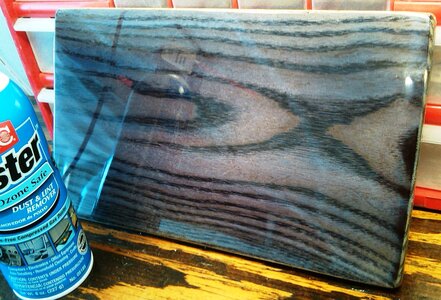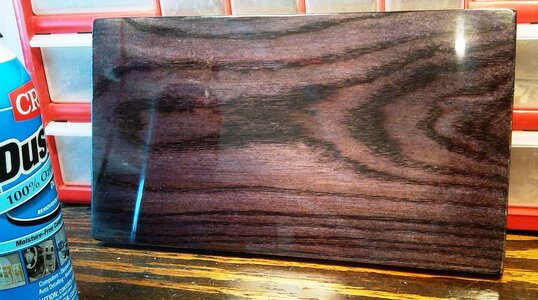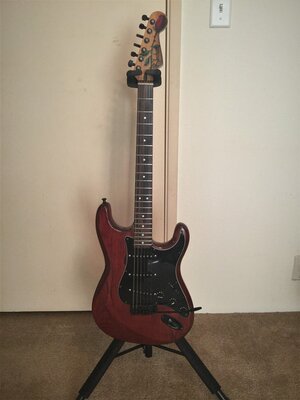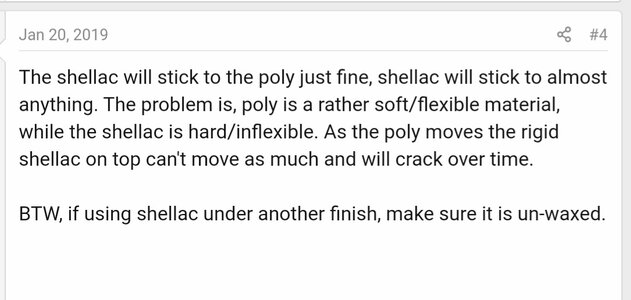Part 1
Oil finishes have become among the popular finishes used by ship model makers. This is probably due to the pleasing, close-to-the-wood look that oil finishes produce. But it is primarily due to how easy the oil finishes are to apply. In most cases, all you have to do is wipe on and then wipe off a couple of coats. In spite of the ease of application (or maybe because of it), there is a great deal of confusion about oil finishes. Here are some of the most commonly asked questions about oil finishes:
MYTH 1: Oil finishes were the favored wood finish used by our eighteenth- and nineteenth-century predecessors.
FACT: There's no evidence at all that oil was a well-regarded finish until the rapid growth of the consumer market beginning in the 1960s.
It's a myth that our ancestors thought linseed oil was a great finish. They used linseed oil, of course. It was cheap, compared to other finishes, and it was available. But there is no evidence from surviving records, such as cabinetmakers' account books, that linseed oil was well thought of as a finish. On the contrary, most of the finer, eighteenth-century, city-made furniture, and almost all nineteenth-century, factory-made furniture, was finished with shellac or varnish.
It's the myth that our predecessors expended much effort applying linseed oil when they did use it. Rubbing linseed oil into the wood does absolutely no good. There is some mention in cabinetmakers' account books of rubbing linseed oil, in combination with brick dust or pumice, to fill the pores of the wood. But you have to get into the twentieth century before you find written reference to anyone in the eighteenth century rubbing oil alone into wood. (How could the writers have known?)
MYTH 2: Oil finishes penetrate into the wood and protect the wood from the inside.
FACT: The penetrating qualities of oil finishes are of very little significance in protecting the wood.
It's a myth that linseed oil applied in any manner is a durable finish. A linseed oil finish is too thin and soft to protect well against heat, stains, or wear. And linseed oil, no matter how you apply it, or how many coats you apply, is quickly and easily penetrated by water and water vapor. Oil finishes are penetrating finishes, and they are sometimes marketed as protecting the wood from the inside. They are contrasted with film finishes, such as shellac, lacquer, varnish, and water base, which protect the wood by building a film on the surface of the wood. To assess the accuracy of the claim that penetrating finishes protect from the inside, you need to understand how penetration occurs and what value it has (or does not have) in protecting the wood. Penetration does very little to the wood. You can totally fill a piece of wood with a linseed oil finish, and it will do nothing to protect the surface of the wood from damage. Coarse objects will scratch the wood, stains will stain the wood, and water will smudge the wood almost as easily as if there were no finish in the wood at all. The only possible advantage gained by filling the wood with the finish is to stabilize the wood from shrinkage and swelling caused by the water-vapor exchange.
MYTH 3: All finishes sold as "oil" are some type of oil.
FACT: There are four significantly different types of finish that are sold as "oil." Not all are oil.
Much of the confusion about oil is generated by the marketplace, which offers four significantly different finishes, all called oil. We will talk about those finishes in the next part.
Oil finishes have become among the popular finishes used by ship model makers. This is probably due to the pleasing, close-to-the-wood look that oil finishes produce. But it is primarily due to how easy the oil finishes are to apply. In most cases, all you have to do is wipe on and then wipe off a couple of coats. In spite of the ease of application (or maybe because of it), there is a great deal of confusion about oil finishes. Here are some of the most commonly asked questions about oil finishes:
- Does oil protect as well from inside the wood as other finishes do on the surface of the wood?
- Is it better to rub the oil into the wood or apply using the brush?
- Will more coats produce gloss?
- Does the boiled linseed oil make by boiling raw linseed oil?
- Does tung oil better than linseed oil or vice versa?
- What is Danish oil or teak oil? Moreover, what is antique oil or Val-Oil?
- What is the best way to maintain an oil finish?
MYTH 1: Oil finishes were the favored wood finish used by our eighteenth- and nineteenth-century predecessors.
FACT: There's no evidence at all that oil was a well-regarded finish until the rapid growth of the consumer market beginning in the 1960s.
It's a myth that our ancestors thought linseed oil was a great finish. They used linseed oil, of course. It was cheap, compared to other finishes, and it was available. But there is no evidence from surviving records, such as cabinetmakers' account books, that linseed oil was well thought of as a finish. On the contrary, most of the finer, eighteenth-century, city-made furniture, and almost all nineteenth-century, factory-made furniture, was finished with shellac or varnish.
It's the myth that our predecessors expended much effort applying linseed oil when they did use it. Rubbing linseed oil into the wood does absolutely no good. There is some mention in cabinetmakers' account books of rubbing linseed oil, in combination with brick dust or pumice, to fill the pores of the wood. But you have to get into the twentieth century before you find written reference to anyone in the eighteenth century rubbing oil alone into wood. (How could the writers have known?)
MYTH 2: Oil finishes penetrate into the wood and protect the wood from the inside.
FACT: The penetrating qualities of oil finishes are of very little significance in protecting the wood.
It's a myth that linseed oil applied in any manner is a durable finish. A linseed oil finish is too thin and soft to protect well against heat, stains, or wear. And linseed oil, no matter how you apply it, or how many coats you apply, is quickly and easily penetrated by water and water vapor. Oil finishes are penetrating finishes, and they are sometimes marketed as protecting the wood from the inside. They are contrasted with film finishes, such as shellac, lacquer, varnish, and water base, which protect the wood by building a film on the surface of the wood. To assess the accuracy of the claim that penetrating finishes protect from the inside, you need to understand how penetration occurs and what value it has (or does not have) in protecting the wood. Penetration does very little to the wood. You can totally fill a piece of wood with a linseed oil finish, and it will do nothing to protect the surface of the wood from damage. Coarse objects will scratch the wood, stains will stain the wood, and water will smudge the wood almost as easily as if there were no finish in the wood at all. The only possible advantage gained by filling the wood with the finish is to stabilize the wood from shrinkage and swelling caused by the water-vapor exchange.
MYTH 3: All finishes sold as "oil" are some type of oil.
FACT: There are four significantly different types of finish that are sold as "oil." Not all are oil.
Much of the confusion about oil is generated by the marketplace, which offers four significantly different finishes, all called oil. We will talk about those finishes in the next part.












